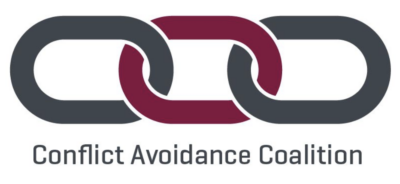 Starting with the obvious question, why would a disputes lawyer support a pledge to avoid and reduce disputes, is this turkey really voting for Christmas? The reality, however, is that dispute lawyers have been advising clients about ADR and other ways to reduce the impact of disputes. Making people aware of the pledge serves the same purpose of avoiding the full consequences of formal proceedings, which usually involve a long and costly process.
Starting with the obvious question, why would a disputes lawyer support a pledge to avoid and reduce disputes, is this turkey really voting for Christmas? The reality, however, is that dispute lawyers have been advising clients about ADR and other ways to reduce the impact of disputes. Making people aware of the pledge serves the same purpose of avoiding the full consequences of formal proceedings, which usually involve a long and costly process.
As with other forms of ADR, our focus as lawyers is on helping our clients find the best solutions to the challenges they are facing. Sometimes that has to involve formal proceedings, especially when having to respond to claim. In the long term, however, and when we get involved at the earlier stages of a project, we can add value as lawyers by advising our clients on what they can do to reduce the impact of potential disputes and using the dispute avoidance techniques prompted by the pledge is a useful first step. All the more so when this is coupled with a review of the Conflict Avoidance Toolkit and the steps it suggests, trying to see how it can be implemented on any specific project.
But simply committing to a process does not mean that the rest will be straightforward. Looking at the typical causes of disputes, much of it is based on a lack of understanding of the contractual and legal framework, often coupled by not enough information about the underlying factual circumstances. As lawyers, we can of course confirm the correct legal and contractual position, but our experience of disputes means we can also provide guidance to our clients on how to best identify the true factual position. This allows a realistic assessment of the likely outcome in the event of a dispute progressing, which is essential when trying to resolve disputes early. Disputes often escalate when parties rush to pursue claims without a full understanding of the underlying merits or thinking ahead as to how the other party will respond.
Moving on to another obvious question, what is the point of signing a non-binding pledge, as opposed to, for example, including binding multi-tiered dispute resolution clauses and other processes which try to achieve the same outcome, such as dispute avoidance boards? The reality is that the pledge can sit alongside the contractual dispute resolution clauses, and both have a role to play. Having clear dispute resolution clauses that encourage parties to talk and explore how a dispute can be resolved play an important role in dispute avoidance and are consistent with what the pledge seeks to achieve.
The pledge, however, is a public statement that is not limited to a specific project or contract. An organisation that advertises its commitment to the pledge and its underlying principles is making a statement as to how it intends to manage its projects and relationships with other parties. This will be seen as a positive step and could well be an advantage when, for example, tendering for work. Indeed, a useful early step when dealing with any organisation is checking the directory to see whether they have signed the pledge.
The test of course will be when a potential dispute arises. Indeed, it is to be expected that a party that has committed to the pledge and is facing a potential dispute will be taken to task by the other party if it does not behave in accordance with the principles it said it is committed to, and takes an adversarial approach instead. The gold, silver and bronze levels that Martin Burns has referred to in his article on the Pledge are intended to highlight the importance of implementing the principles in practice and ensuring people follow them, rather than just making the public commitment. In that respect, agreeing to a contractual dispute resolution clause that implements the principles of the pledge is an easy way to demonstrate commitment to the pledge.
A similar issue arises as to the benefit of a non-binding recommendation, an option identified as part of the Early Intervention section in the Dispute Avoidance Toolkit, and whether the disappointed party will simply ignore it. Again, where a party fails to take account of such a recommendation this will identify whether it is genuinely willing to explore dispute avoidance. In practice, a well-reasoned recommendation from an authoritative person will be persuasive. Even if not accepted in full, it is highly likely to narrow the issues in dispute or at the very least add clarity and help parties understand what the outcome of formal proceedings is likely to be. The other benefit of this approach is that a non-binding recommendation is unlikely to result in the hostile behaviours that are sometimes seen in adjudication and the desire to avoid a binding, albeit temporarily, decision.
Stepping back, the lawyers and other consultants who work within the construction and engineering industry will have seen the effect long and costly dispute resolution proceedings have on construction businesses and how disruptive they can be. We can help our clients in looking into and implementing the various steps that can be taken to limit the impact of disputes, and the pledge plays an important role in such discussions and what we do in practice. Looking at it differently, experience tells us that the cost and effort of implementing dispute avoidance techniques is minimal compared to the adverse impact of resolving disputes through formal proceedings.
– Shy Jackson, October 2024

